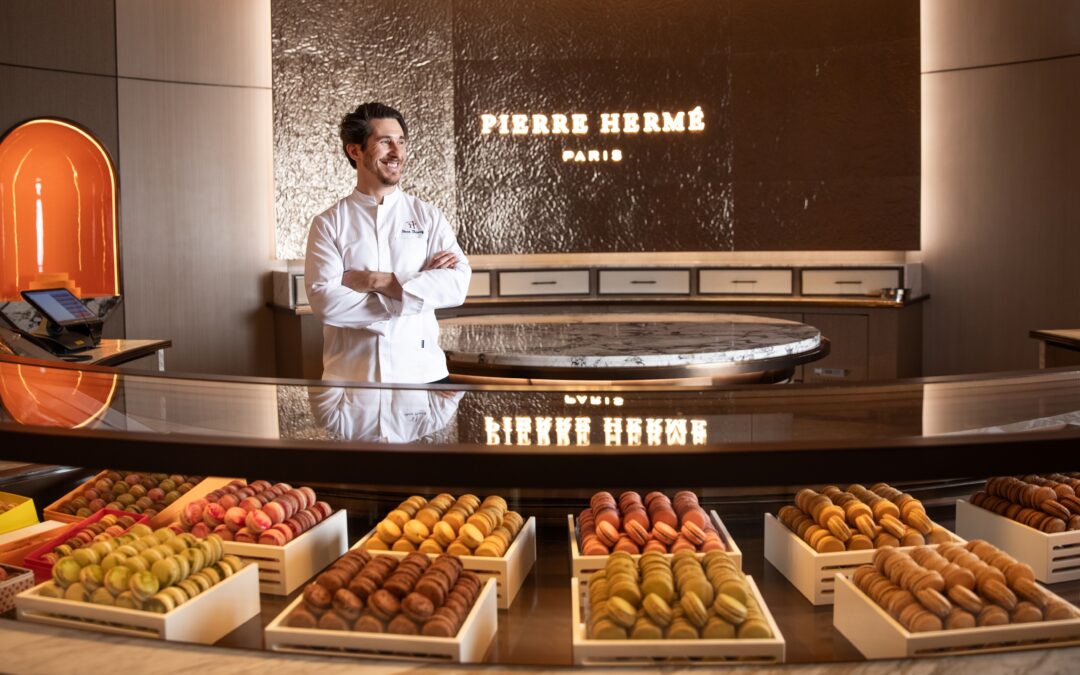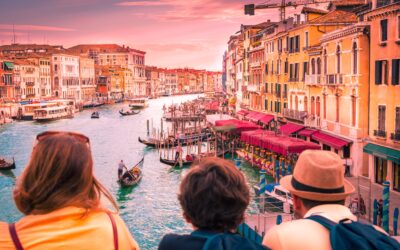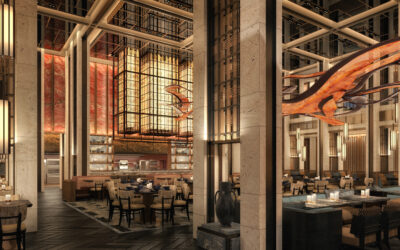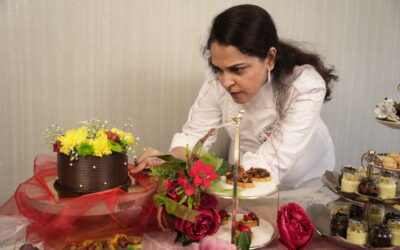Steve Thiery is the Chef Pâtissier Exécutif Pierre Hermé Paris. Born in Lorraine, he trained in Nancy with Jean-François Adam, a well-known figure in the world of pastry. As a typical Sagittarius, Steve dreamt of travels. He left for Polynesia, where at the age of 22 he became head pastry chef at the Inter Continental in Tahiti then at The St. Regis Bora Bora. After five years, he returned to France and worked in Cannes for pastry chef and chocolatier Jean-Luc Pelé with whom he made up to 500,000 macaroons a month. Like Little Thumb’s round pebbles, the macaroons led him straight to Ladurée, where he stayed for seven years as head pastry chef abroad. And once again he travelled from France to Switzerland and from Lebanon to Morocco, where he stayed for four years in Casablanca. In Morocco, he refined the art of wedding cakes and even set a record for a wedding of 4,000 people with 3,70 m high cake.
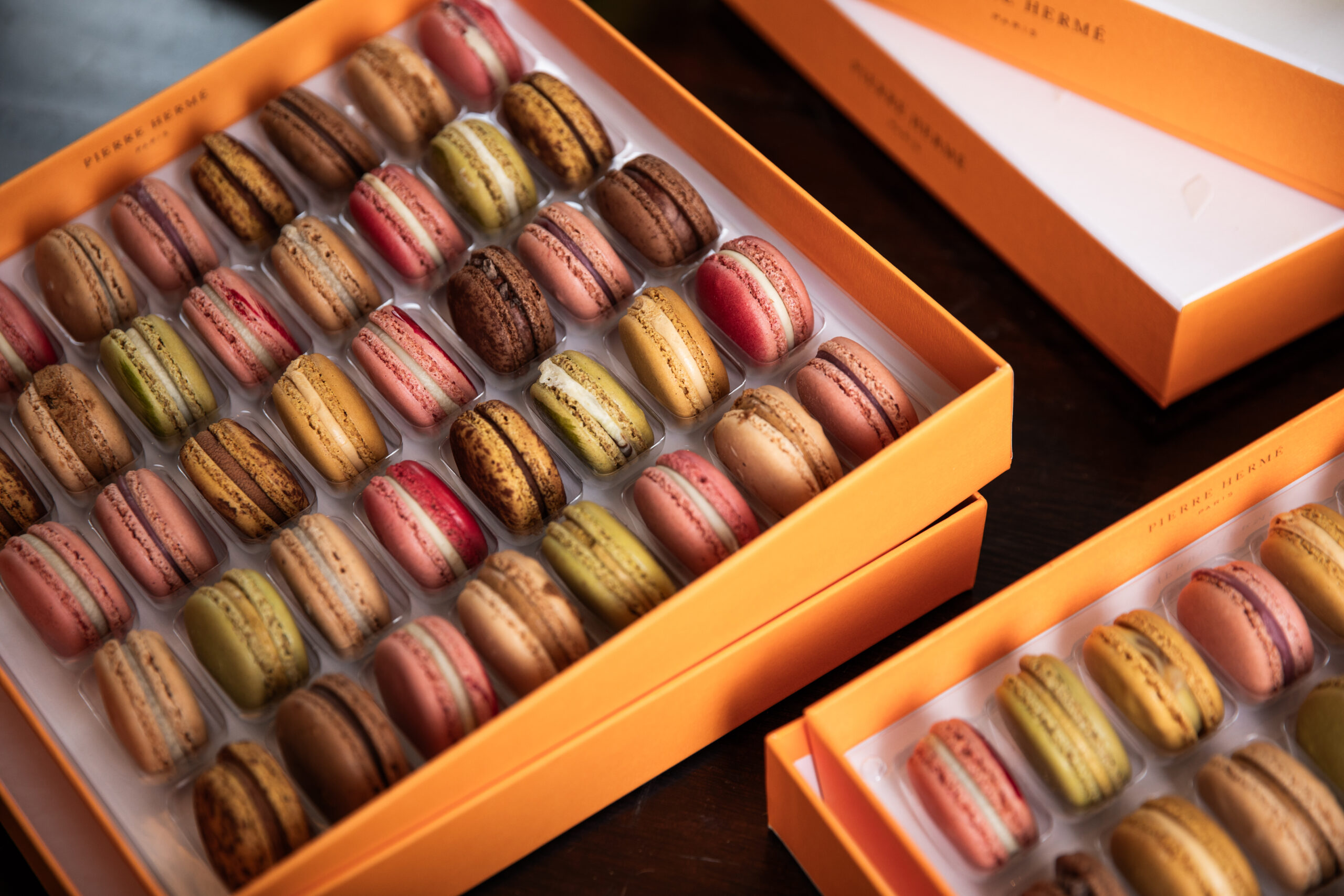
In March 2019 he joined Pierre Herme as the executive chef of the well-known La Mamounia Hotel in Marrakech. He oversees the whole hotel including a shop and the restaurants with up to 60 plated desserts in their menus. The 5 years as the head of pastry at La Mamounia helped him to develop a close relationship with the master himself : Pierre Hermé. Together they created original cakes made with local ingredients and inspired by local pastries like the ‘Gazelle Horn’ or the ‘Mhencha’. After 10 years in Morocco, his passion for travelling caught him up and 9 months ago he moved to Riyadh. Once more Pierre Hermé trusted him with one of his big projects abroad: the opening of the 1st Pierre Hermé store in Saudia at The Four Seasons hotel in Riyadh. Steve was up to the challenge: adapting to the local taste and ways as well as working in English with international teams.

What inspired you to become a pastry chef? You’ve been in the industry for quite some time. Would you have done anything differently when first starting out?
My passion for pastry started very early and I began studying it at the age of 13. In the small town where I grew up in the East of France, there was a pastry shop with a talented chef and he used to have very beautiful chocolate display. Each time I was passing by with my mom, I was just amazed and as I was not very happy at school, I decided to learn how to do it myself. So during the next Easter holidays I started training in this shop and I started studying pastry the following September. As I started really young, I spent 4 years in this shop as an apprentice.

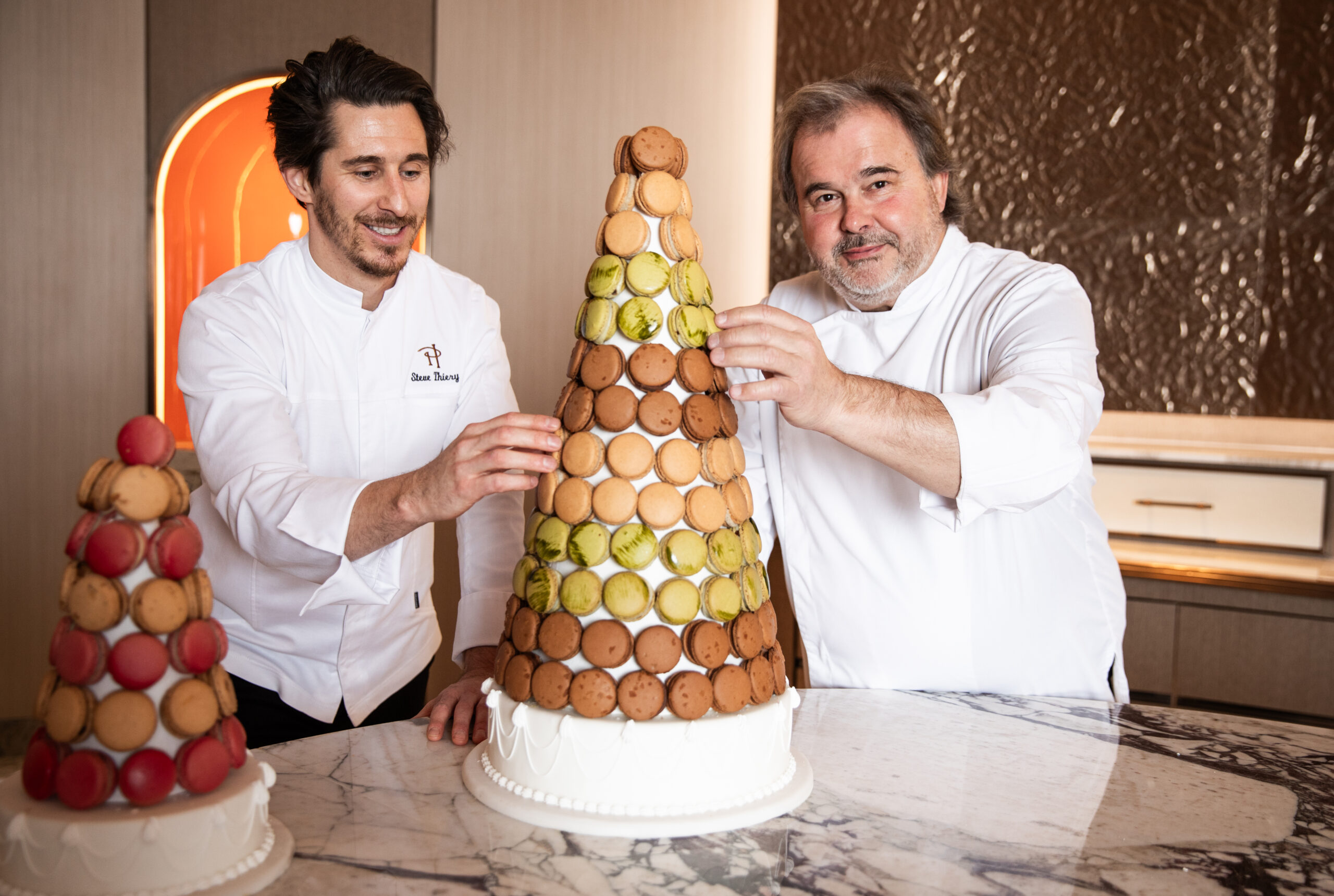
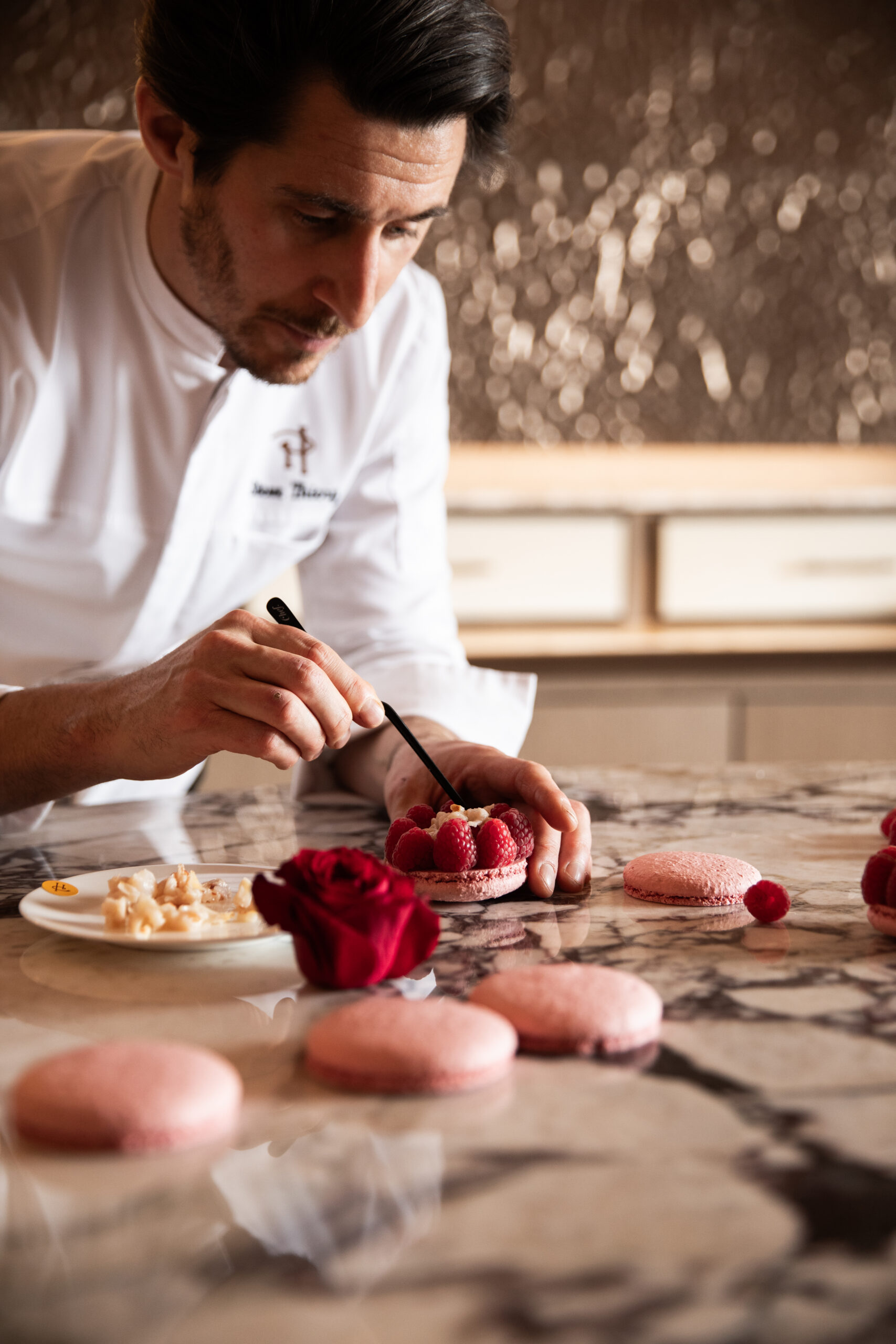
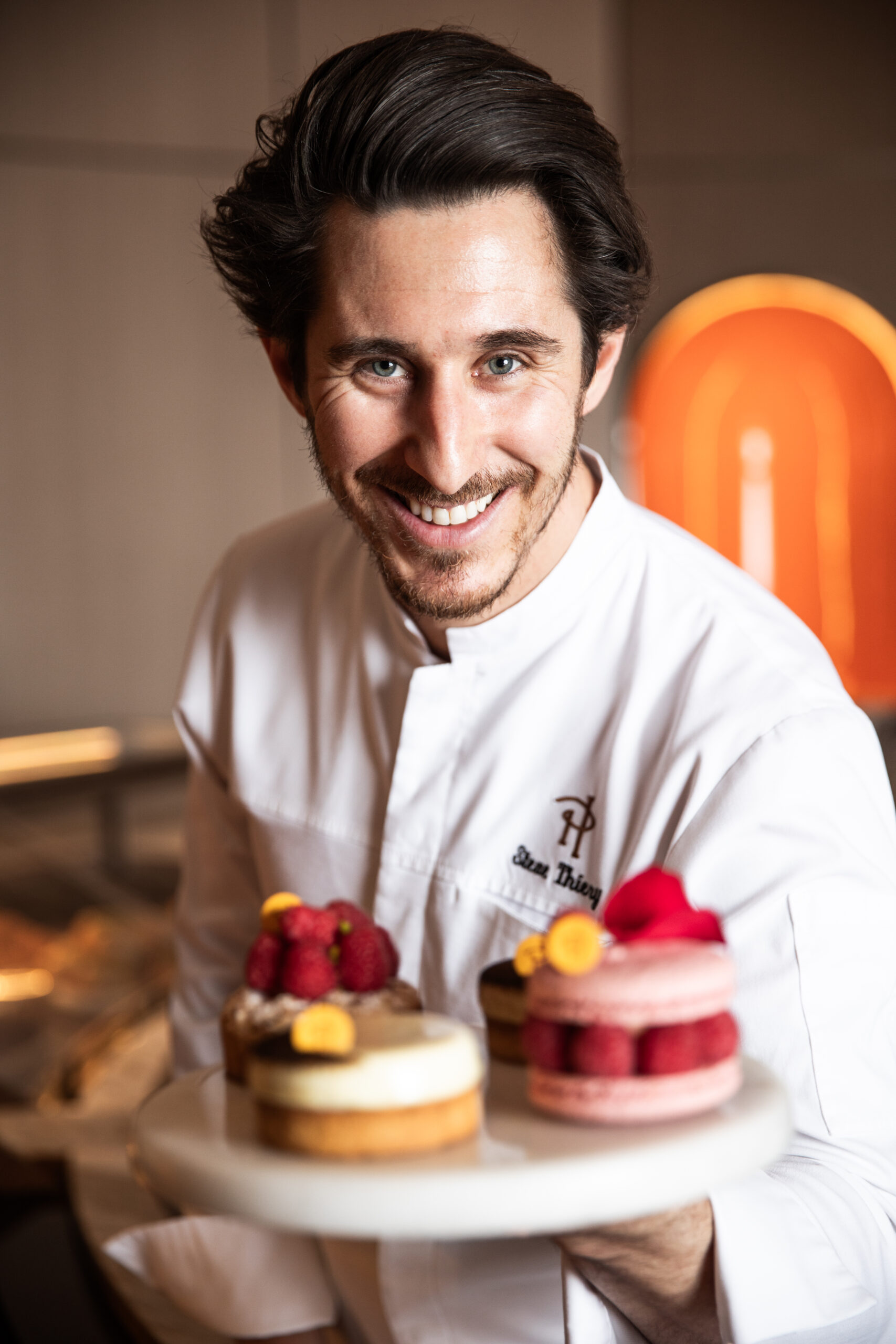
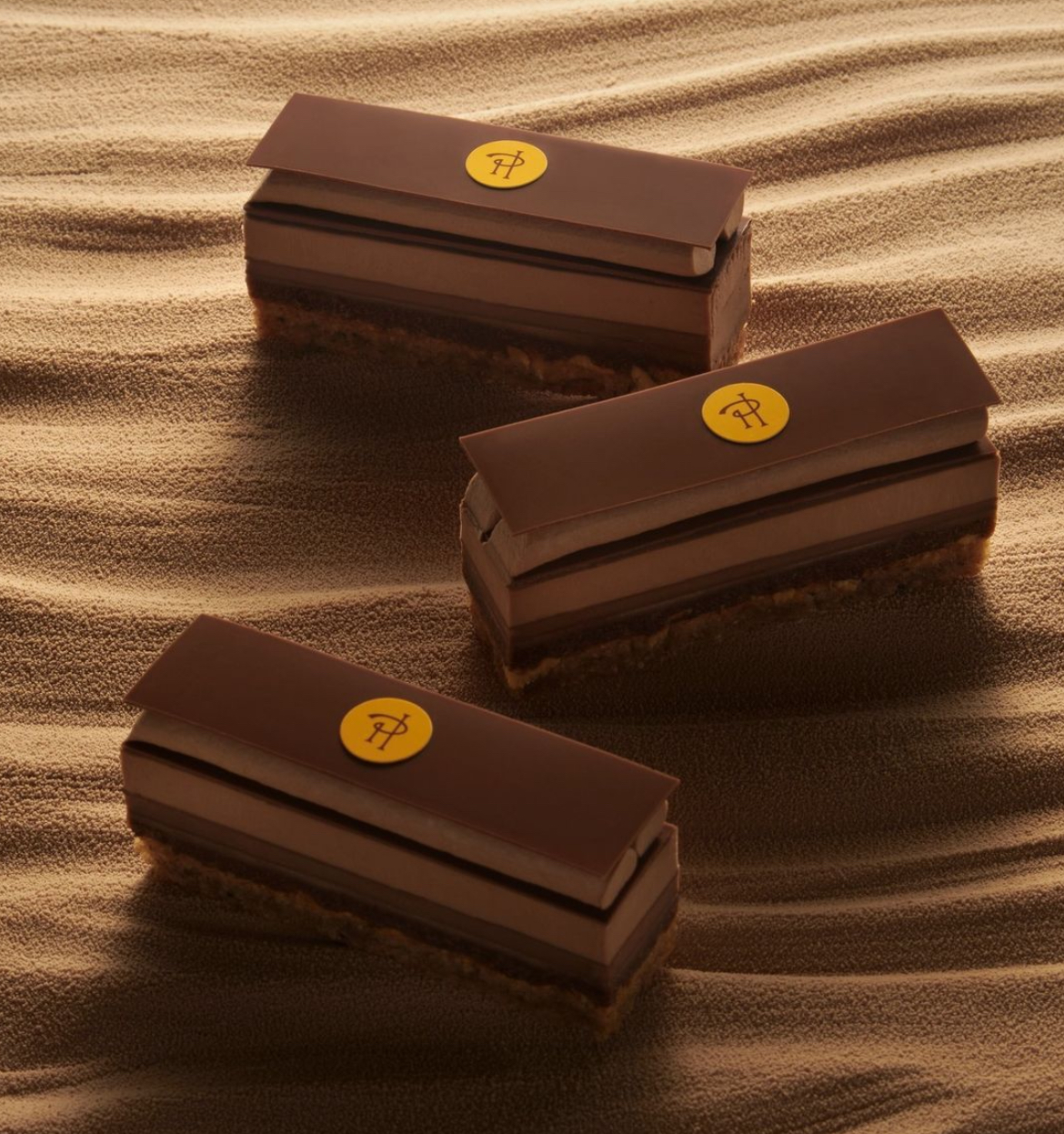
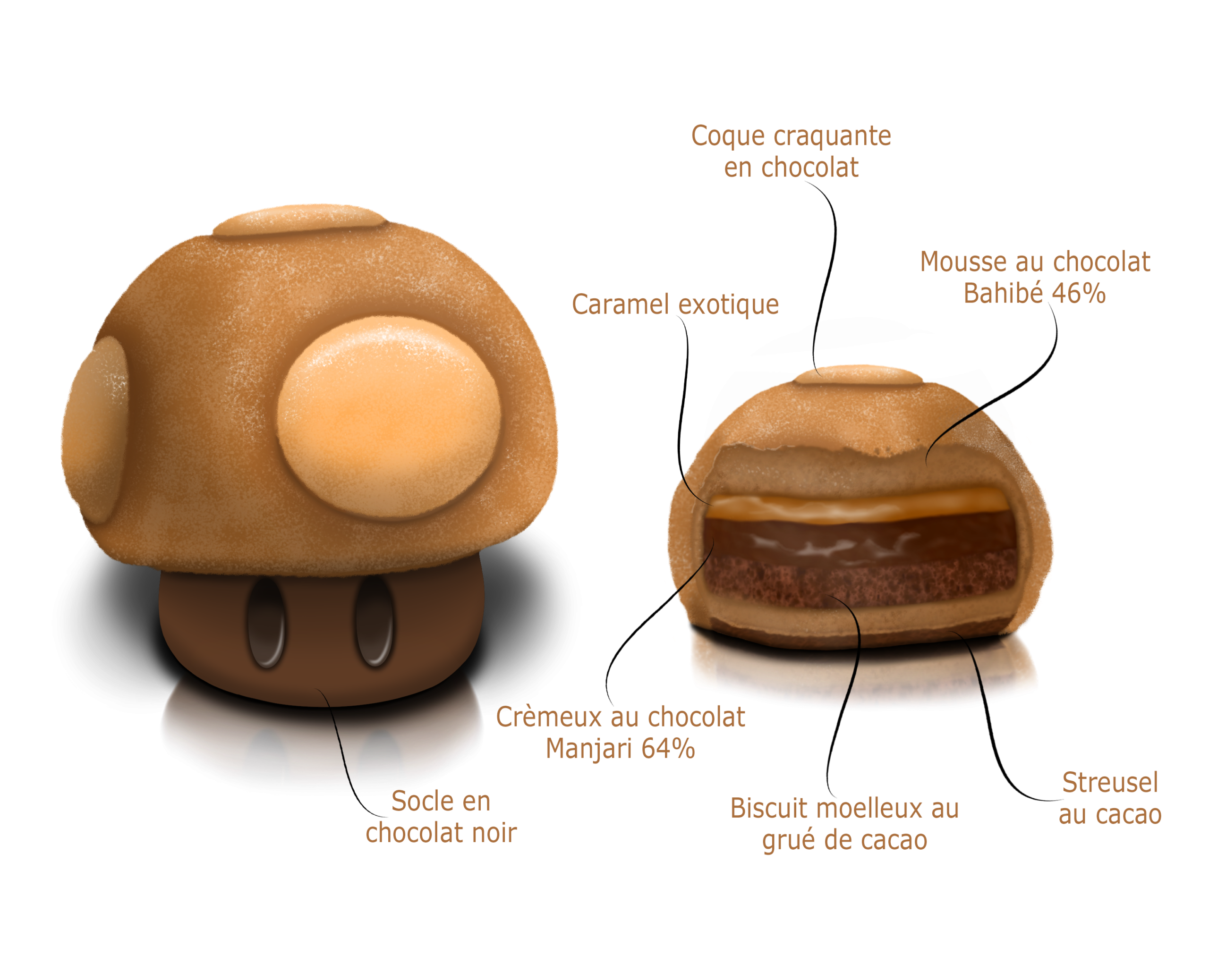
I’m in Saudi since last November so I’m still in the process of identifying local producers. Pierre Hermé has a very strict policy in terms of sourcing ingredients, but when we can find locally a good option we can always consider them. Today, I’m trying to create new recipes with typical Saudi ingredients (dates, camel milk…) and for that I will obviously go local.
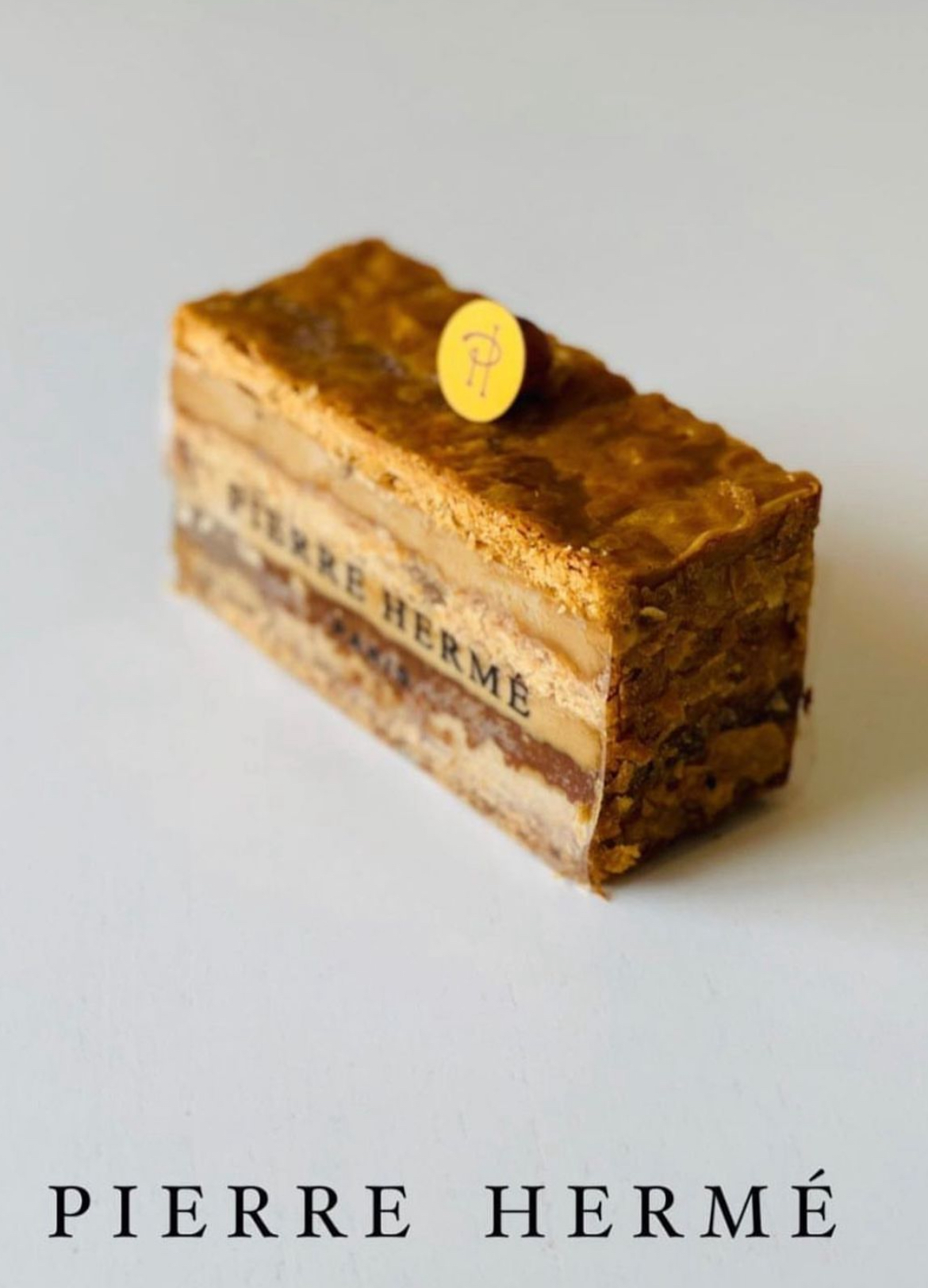
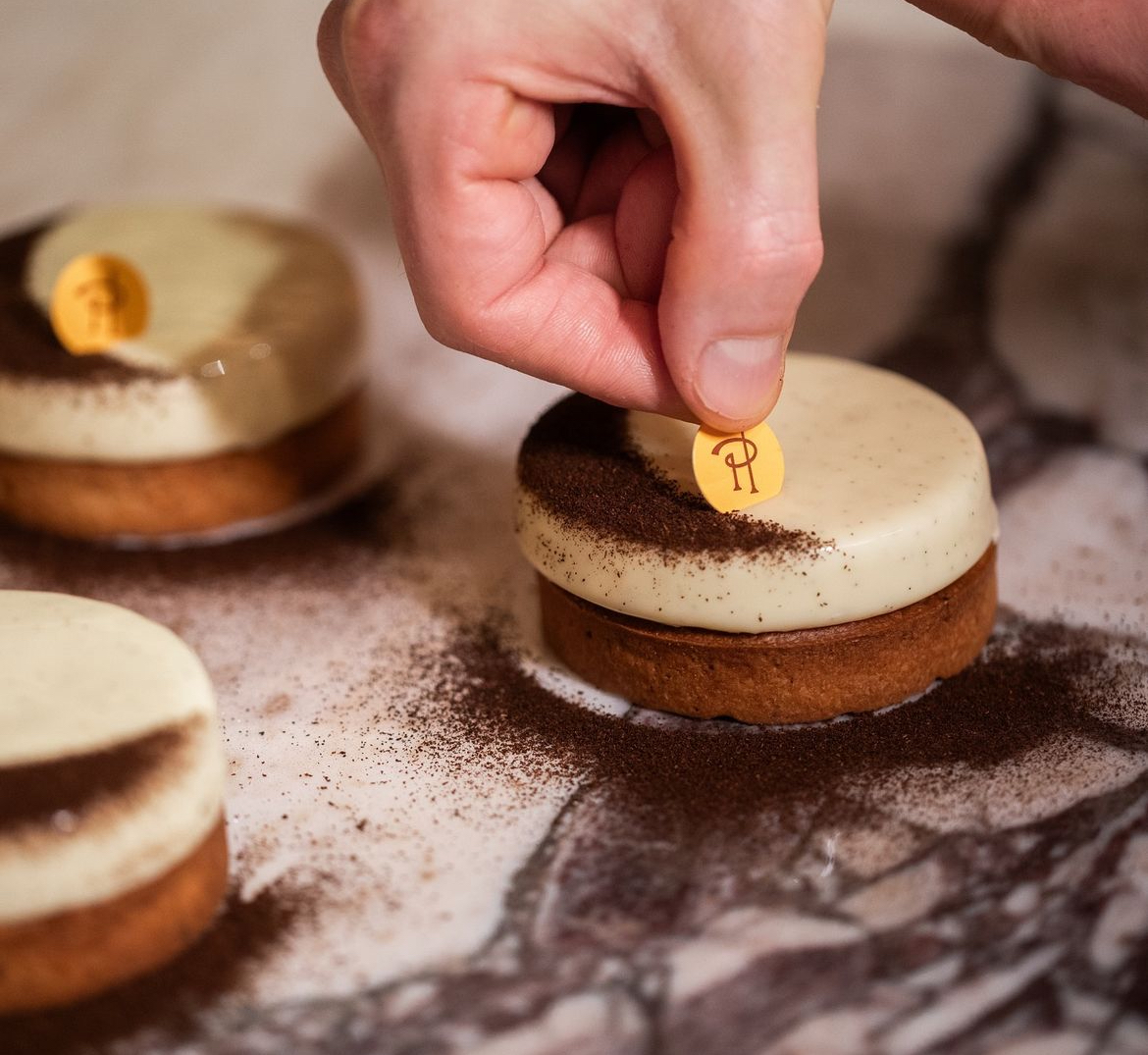

TARTE INFINIMENT VANILLE
Sugar dough
- 300 g croissant butter 82 % fat “Elle et Vire, French butter”
- 60 g almond powder
- 190 g icing sugar
- 0,5 g homemade vanilla powder
- 120 g fresh or pasteurized whole eggs
- 2 g de Guérande fleur de sel
- 500 g wheat flour T55 (Viron)
Weight total: 1.172 kg
In the mixer bowl with paddle, to mix the butter to be soft then add the mix of powder 1 by 1 ( almond powder, icing sugar, vanilla powder ,eggs and sea salt). When you add the wheat flour, mix slowly to get a dought homogeneous. To cling film and range the paton of the dought in the chiller.
Vanilla ganache
- 500 g Ivory chocolate 35 % cocoa (Valrhona)
- 450 g liquid cream (35 % fat) “President or Elle et Vire”
- 8 g vanilla pods Mexique, split and scraped
- 8 g vanilla pods Madagascar, split and scraped
- 8 g vanilla pods Tahiti, split and scraped
- 8 g vanilla extract Planifolia (Authentic Products)
- 2 g vanilla powder homemade
Weight total: 492 g
Melt the ivory chocolate in the microwave or in a bain marie. To boil the cream, add the vanilla pods and leave to infuse covered for at least 30 minutes. Remove the pods and boil the cream with the vanilla extract and powder. Pour the cream three times on the ivory chocolate melting and mix. Mix to obtain a homogeneous ganache. Remove in stainless steel bowl with cling film on contact and let cool in the refrigerator
Biscuit cuillère
- 720 g fresh or pasteurized white egg
- 10 g white eggs powder Gallia (Louis François)
- 450 g white sugar
- 400 g fresh or pasteurized egg yolk
- 40 g Trimoline
- 20 g sorbitol liquid (Louis François)
- 250 g wheat flour T55 (Viron)
- 250 g potato starch
Poids total: 2.140 kg
Sift together the wheat flour and potato starch. Mix the yolks with the Trimoline and sorbitol. In the bowl of the whisker, whip the whites with the sugar until firm; pour the yolks into the whites and let them mix gently for a few more seconds. Using a maryse, stir in the flour and potato starch, gently lifting the mixture. Use it immediately.
Vanilla anglaise cream
- 500 g liquid cream (35 % fat) “President or Elle et Vire”
- 4 g vanilla pods Mexique, split and scraped
- 4 g vanilla pods Madagascar, split and scraped
- 4 g vanilla pods Tahiti, split and scraped
- 100 g fresh or pasteurized egg yolk
- 125 g white sugar
- 56 g gelatin mass
Poids total: 793 g
Boil the cream with the vanilla pods and leave to infuse for 30 minutes covered before passing this infusion to the strainer. Mix the yolks with the sugar; bring the infused cream to a boil, pour it over the yolks and sugar, whisk and put back in the pan before cooking like a custard at 85°C. Add the melted gelatin mass and mix. Remove in a stainless-steel bowl with cling film on contact and cool as quickly as possible. Refrigerate for 12 hours before use.
Vanilla mascarpone cream
- 750 g vanilla anglaise cream
- 500 g mascarpone (Galbani 41 to 48 % fat)
Poids total: 1.250 kg
In the bowl of the kitchen Aid with the whisk, work the mascarpone to make it homogeneous. Add the vanilla anglaise cream and let it whip. Use it immediately.
Vanilla syrup
- 1 kg mineral water
- 4 g vanilla pods Mexique, split and scraped
- 4 g vanilla pods Madagascar, split and scraped
- 4 g vanilla pods Tahiti, split and scraped
- 20 g vanilla extract Planifolia (Authentic Products)
- 500 g white sugar
Poids total: 1.582 kg
Bring water, vanilla pods, white sugar to a boil and leave to infuse for at least 30 minutes. Add vanilla extract. Store in an airtight box in the refrigerator.
N.B.: Vanilla pods can be left in syrup
Vanilla mirror glaze
- 2 kg Ivory chocolate 35 % cocoa (Valrhona)
- 450 g white sugar
- 20 g pectine NH (Louis François)
- 1,1 kg mineral water
- 800 g liquid cream (35 % fat) “President or Elle et Vire”
- 8 g vanilla pods Madagascar, split and scraped
- 45 g glucose syrup
Poids total: 4.423 kg
Melt the ivory chocolate in the microwave or in a bain-marie. Mix the sugar with the pectin NH. Bring cream, water, glucose syrup and vanilla pods to a boil. Remove the pods and add the sugar/pectin mixture. Boil, pour three times on the melted cover and mix like a ganache. Mix to obtain a homogeneous mirror. Use immediately or store in an airtight box in the refrigerator. Use it at 40 degrees Celsius.


